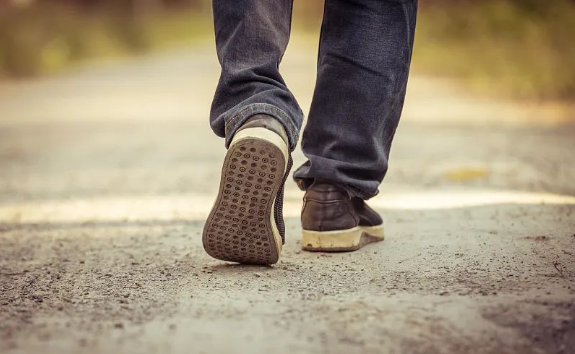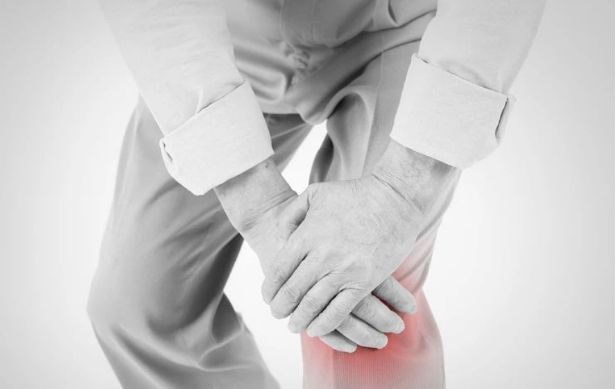
Middle-aged and elderly people want to know whether the blood vessels are blocked, stand up and walk around. If the following signals appear, be sure to pay attention.
1. Chest tightness and chest pain when walking fast;
2. Unexplained dizziness and headache when walking;
3. My heart hurts a little when I walk;
4. Unfavorable movement of one limb when walking;
5. After a few minutes of activity, you will feel weak legs and sore muscles;
6. There is a big difference in blood pressure between the two upper limbs or the blood pressure of the two legs.
These symptoms often indicate that there may be vascular occlusion or severe stenosis, so these conditions must be very careful. Secondly, if middle-aged and elderly people often have dizziness, imbalance, walking and walking to the side, you should also be alert to the possibility of blood vessel blockage.

3.剪刀步

4. Drunken steps
Drunken step is a popular term, its scientific name is ataxia gait, manifested as walking often does not walk in a straight line, walking is still wobbly.
Drunken walking is mainly due to the appearance of various causes of damage to the cerebellum, which causes the patient's muscles to tense or decrease and move at will. Clinically, we need to distinguish between the speed and slowness of the onset of symptoms, acute vascular disease and infectious diseases common in the cerebellum, subacute and rapid progression, need to be vigilant for cerebellar tumors.
Health Alert:
This gait should be highly suspected of cerebral hemorrhage, cerebral infarction, brain tumor, cerebellar lesions and other diseases, and has caused cerebellar damage and cerebellar dysfunction. Therefore, if you do not drink, but suddenly appear drunk gait, you should hurry to the hospital to check whether there are the above diseases, it is generally recommended to see emergency department, neurology, neurosurgery and other departments.
Health Tips:
Such patients should avoid falls and injuries in daily life, especially do not engage in high-altitude and ascending operations.
5. Rocking gait
Swinging gait, also known as "duck step", also called myopathic gait, is manifested as alternating swings of the trunk, especially the buttocks, left and right when walking. It appears due to the loss of muscle strength of the trunk and gluteal muscles, and the trunk and hips cannot be fixed when walking, resulting in the phenomenon of swinging the buttocks.
Health Alert:
Rocking gait is more common in progressive muscular dystrophy, but also in progressive spinal muscular atrophy, juvenile spinal muscular atrophy and other diseases.
Health Tips:
The principle of treatment of this disease is early diagnosis, timely treatment, the older the age at the beginning of treatment, the worse the effect. Therefore, once there is a swinging gait, it is recommended to seek medical attention in time.

6. Cross-threshold gait
Threshold gait, also known as "chicken step", is manifested as the knee joint and hip joint flexed before the toe leaves the ground, so that the leg can be raised in order to drag the foot stride, like crossing the threshold, and although the patient does not have a balance disorder, but often tripped by the edge of the carpet or small objects under the feet.
Health Alert:
The transthreshold gait is mostly caused by common peroneal nerve palsy causing paralysis of the extensor muscles of the calf, and the foot prolapse on the diseased side, and can also be seen in chronic acquired axonal neuropathy, ossicular muscular atrophy (Charcot Marie Tooth disease), progressive spinal muscular atrophy and poliomyelitis.
Health Tips:
It is best not to lay carpets or soft cushions in the home of such patients, and try not to put small items, wires, etc. on the ground to prevent falling after tripping.
7. Mop step
The mop step is manifested as a different step when walking, and the two legs do not step forward alternately and rhythmically, but one leg steps out, and the leg behind it is weak, dragging to keep up.
Health Alert:
This gait is common in patients with lumbar disc herniation, where nerve compression results in insufficient muscle strength in one leg. When mop steps develop to a severe point, intermittent lameness, that is, walking with a limp, may occur.
Health Tips:
If there is a dragging step, it is recommended to go to the neurosurgery department first, and in combination with the doctor's advice, rehabilitation treatment and home care can be considered.
In daily life, you can consider sleeping on a hard bed to rest, avoid sitting for a long time, reduce the load on the lumbar spine, and try not to bend over to pick up heavy objects. Pay attention to keep warm, prevent cold, do your best, it is best to insist on walking for 40 minutes ~ 60 minutes every day, the intensity is to feel a little tired after walking. Be careful not to get overly tired or it will worsen the symptoms.
Shandong Zhushi Pharmaceutical Group Co., Ltd., founded in 2003, has more than 5000 registered employees. After years of development, it has developed into a diversified industrial cluster integrating medical devices, polymers, cosmetics, health food, daily necessities and biological reagent production, enterprise management consulting and training, real estate economy, pharmaceutical transportation, pharmaceutical printing, etc.
Adhering to the concept of life, health and happiness, the Group provides you with full chain health services.
HOT
NEW